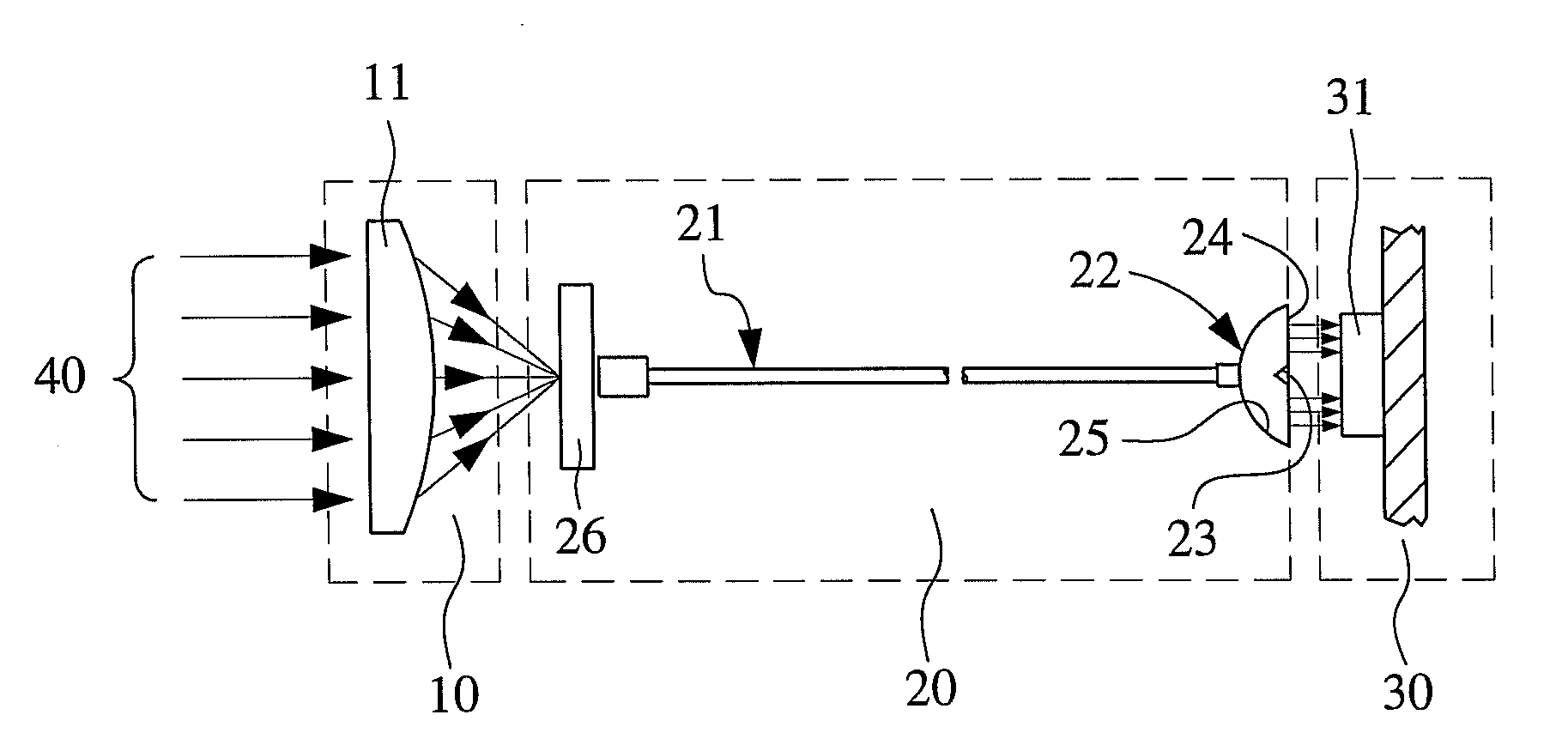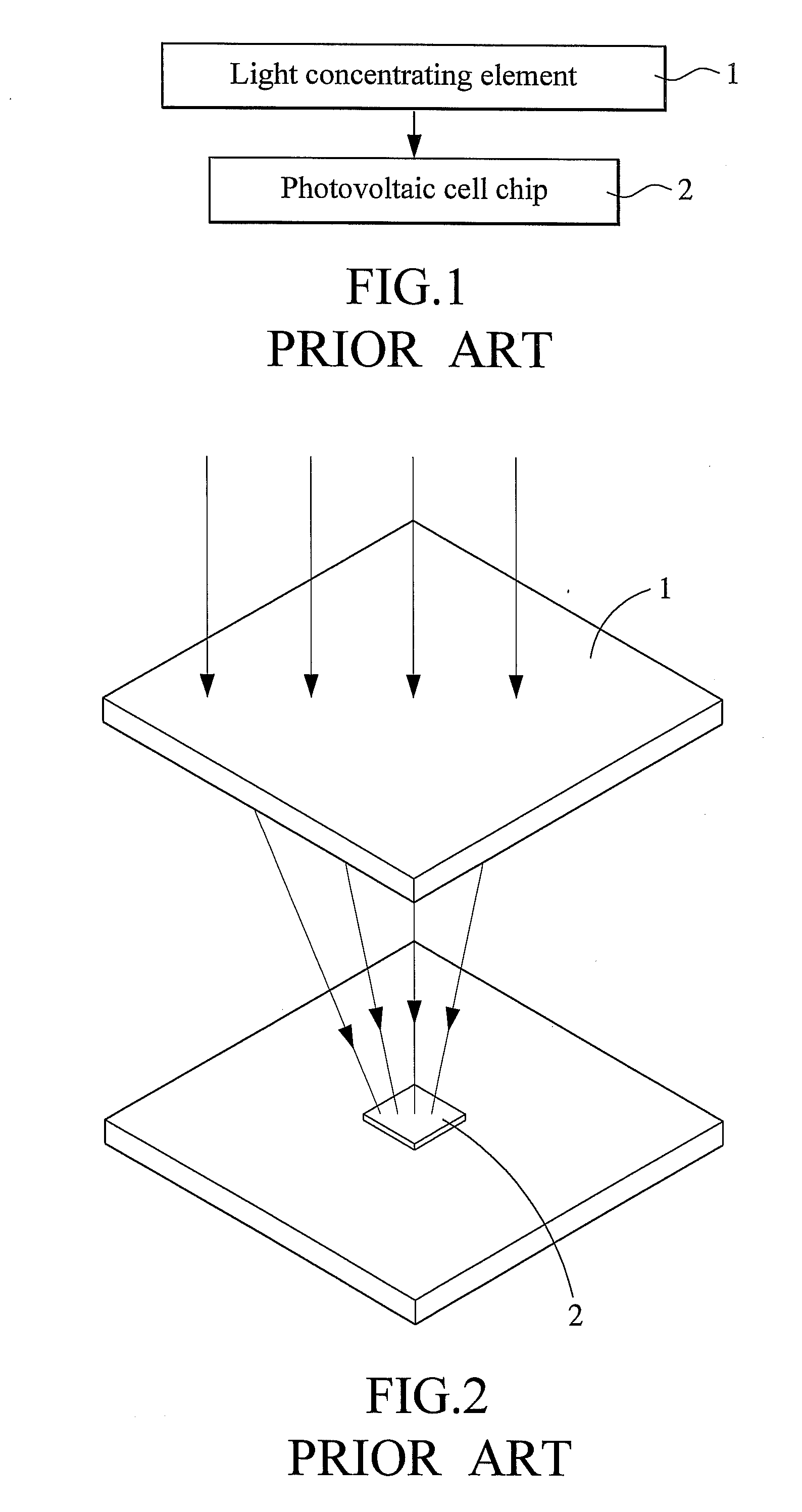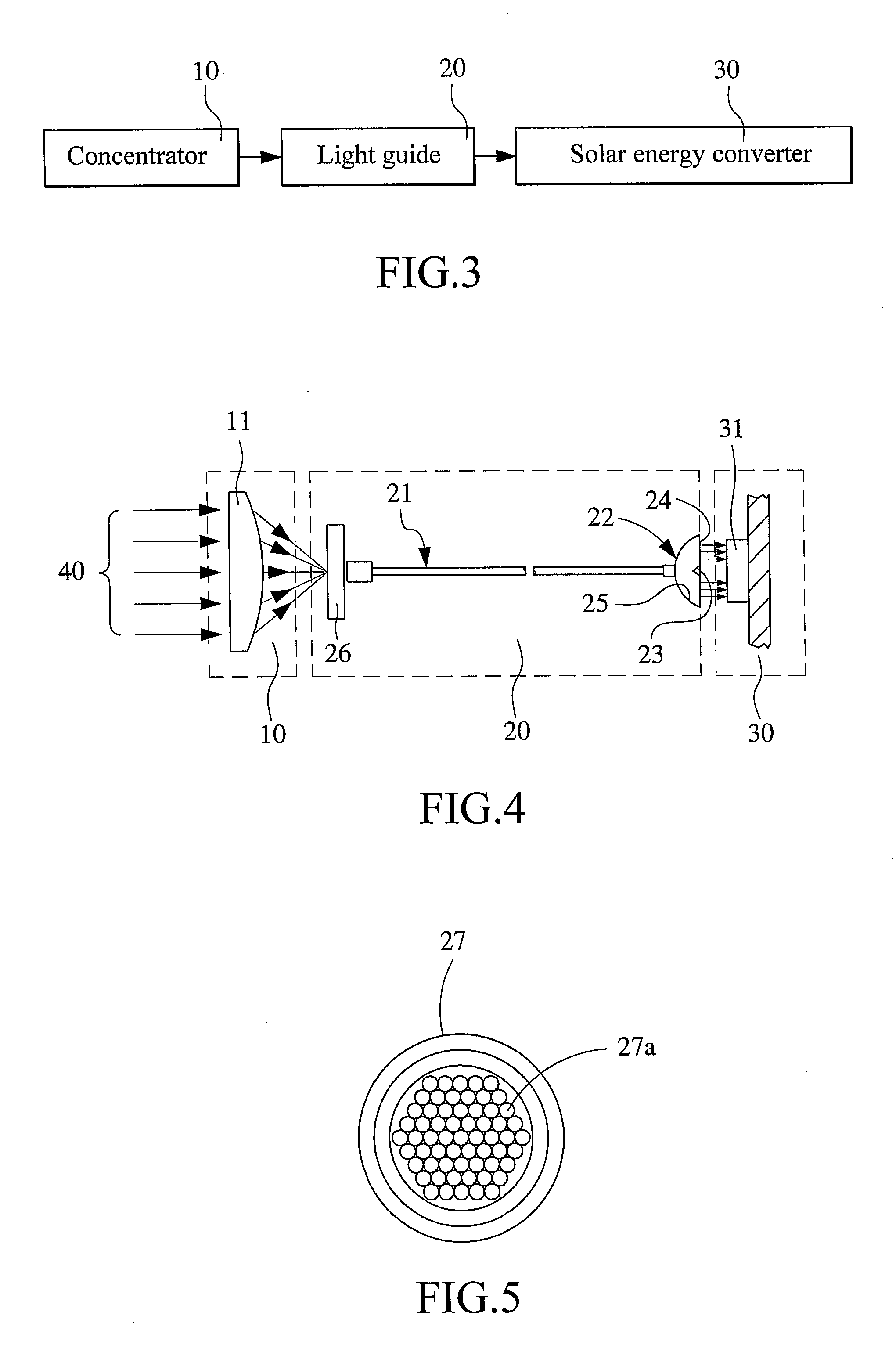Concentration photovoltaic cell system with light guide
a photovoltaic cell and light guide technology, applied in the field of photovoltaic cells, can solve the problems of high cost inefficient method of utilizing photovoltaic cells to convert solar energy into electric energy, and high cost per watt of solar power generation, so as to reduce energy conversion efficiency
- Summary
- Abstract
- Description
- Claims
- Application Information
AI Technical Summary
Benefits of technology
Problems solved by technology
Method used
Image
Examples
first embodiment
[0033]FIG. 5 is a cross sectional view of the optical fiber cable 27 adopted in the contraction photovoltaic cell system of the present invention, and FIG. 6 shows the lens assembly 22 used with the optical fiber cable 27. As can be seen from FIG. 5, the optical fiber cable 27 may contain one single optical fiber 27a for the usage with a photovoltaic cell having a relatively small area, or a plurality of optical fibers 27a for the usage with a photovoltaic cell having a relatively large area, depending on actual need in design. As shown in FIG. 6, when the focused light propagates through the light guide 20 to the lens assembly 22, the light projects from the optical fibers 27a of the optical fiber cable 27 to the reflective mirror 25, and is then reflected by the reflective mirror 25 onto the photovoltaic cell chip 31 of the solar energy converter 30, and converted into electric energy.
second embodiment
[0034]FIG. 7 shows the concentration photovoltaic cell system according to the present invention, in which a light guiding plate 28 is adopted as the light guiding medium 21, and FIG. 8 shows the lens assembly 22 used with the light guiding plate 28. The light guiding plate 28 may have a variable thickness according to the actual design need. The light guiding plate 28 is aligned with the light splitter 23. When the focused light propagates through the light guiding plate 28 to the lens assembly 22, the light projects from the light guiding plate 28 to the pyramidal light splitter 23, and is reflected onto the reflective mirror 25 before being further reflected by the reflective mirror 25 to the photovoltaic cell chip 31 of solar energy converter 30 and converted into electric energy.
[0035]Alternatively, the pyramidal light splitter 23 may be replaced with a curved light splitter (not shown) to provide the same light reflecting effect.
[0036]FIG. 9 shows a concentration photovoltaic ...
PUM
 Login to View More
Login to View More Abstract
Description
Claims
Application Information
 Login to View More
Login to View More - R&D
- Intellectual Property
- Life Sciences
- Materials
- Tech Scout
- Unparalleled Data Quality
- Higher Quality Content
- 60% Fewer Hallucinations
Browse by: Latest US Patents, China's latest patents, Technical Efficacy Thesaurus, Application Domain, Technology Topic, Popular Technical Reports.
© 2025 PatSnap. All rights reserved.Legal|Privacy policy|Modern Slavery Act Transparency Statement|Sitemap|About US| Contact US: help@patsnap.com



